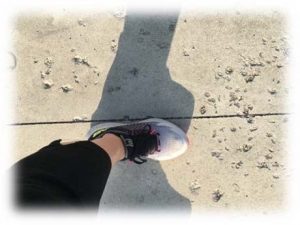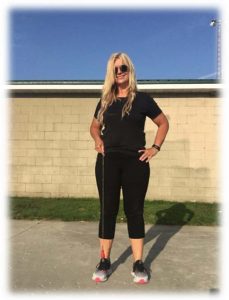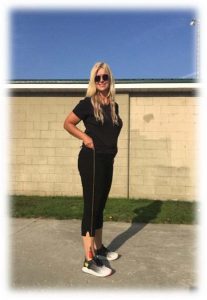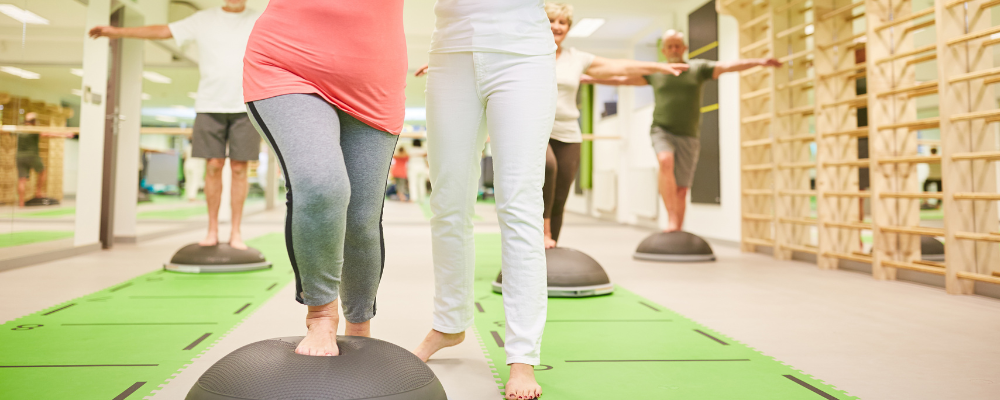It’s such a great feeling to kick off your shoes at the end of a long day. This is partly because shoes can hurt and misshape your feet. Foot pain affects at least one in four older adults. And if your feet hurt, it changes the way you walk. You won’t be solid on your feet. That change in gait is associated with mobility impairment and falls. Foot pain increases as we age and is sometimes associated with other chronic conditions such as diabetes and osteoarthritis. Females have more foot pain complaints than males probably because of the shoes we choose.
When we build a house, we pay special attention to the foundation. Part of the process of building a foundation is building footings. Footings are an important part of foundation construction. The purpose of footings is to support the foundation. Placement of footings is crucial to provide the proper support for the foundation and ultimately the structure. The design and the construction of the foundation is executed in such a way that it can sustain as well as transmit the imposed forces to the ground. Improperly built foundation footings can eventually bring down the house. This is one of the most important concepts you can extrapolate into injury prevention for the entire body.
If our feet are out of alignment, then every joint above the foot will be affected. If your lower back has been hurting, and you do not remember doing anything to injure it, the source of your pain could be your feet. Foot pain is something that many people ignore. But if foot pain is something that has been with you for quite a while, it could be causing problems in your ankles, knees, hips and even your back. When foot pain or a foot deformity causes you to change the way you walk, it changes the way the bones of all those other joints move with each other. Cartilage in the joints can wear down, ligaments and tendons can be stressed beyond their normal range and arthritis can set in.
Pain is the strongest motivator of movement. If our big toe hurts, we instinctively change our walking pattern to reduce pain. Changing your gait changes the mechanics of your ankle joint, eventually causing ankle pain. This change in your walking pattern can also affect the whole chain of your lower body from the ankle, to the knee, to the hip and then to the lower back.
You may often hear me cue you in class to anchor your big toe to the
ground. There is a reason for this. The big toe is vital for balance. A
misaligned big toe will make balance very challenging. The nerve endings
in your big toe signal to the body that you are balanced, and when you walk
the big toe is your prime mover of the foot helping you spring off the floor.
Anchoring your toe will help stabilize your body and even protect your
back!
This week I want to focus on proper alignment. Next week, we’ll focus on
exercises to strengthen the foot.
Straight Feet:

The angle of the foot will impact the forces of each step within your knee
and hip. Have you ever seen someone walking with their feet toed out in a
duck like foot position? Many of us toe out a bit as we age. The more we
walk with our feet angled out, the more likely we will create bunions. This
toed out position also changes the alignment of the rest of the leg, putting
increased pressure on the inner part of the knee. This is a common pattern
seen in individuals with knee osteoarthritis. This outward angle of the foot
also leads to altered use of the foot muscles, leading to a stiff foot and
collapsed arch.
The outer ankle bone should be in line with the bone of the baby toe (as in
the above picture). The easiest way to correct this is to leave the front of the
foot in place and push your ankles outward. In the photo above we are
using a line in the sidewalk to adjust the foot. If your feet are usually out of
alignment, straitening them may feel like your feet are pigeon-toed and
your knees may want to fall in and face each other. To correct this
internally rotated knee position, engage the gluteal (butt) muscles which
will rotate the femur outward and pull the kneecaps forward. The goal is to
have your foot and knee facing forward and in alignment. When this
adjustment is made you should feel the arch in your foot lift.
Foot Width: Feet should be pelvis width apart, keeping the knee in a
direct vertical line with the ankle and hip. Standing and walking with the
feet too narrow or too wide creates an imbalance in the use of the muscles
of your hips. A plumb line is a great life hack to check the width of your feet.
To create a plumb line all you need is a string with a weight on the end of it.
Anything will do. You can use nuts or bolts, fishing bobbins etc. In the
photos below I tied a small screwdriver to a piece of binder twine. Once
you have your plumb line, stand in front of a mirror. Find the bony part of
your hip on the front, called the ASIS, and drop the plumb line down from
this point. Next notice where the weight falls at the ankle. The plumb line
should be centered in the middle of the ankle. If the plumb line falls to the
outside of the ankle, move your foot out until you find this alignment. If the
plumb line is to the inside of the ankle, move your foot inward until you
find this alignment.

Weight over Heels
Weight distribution over your feet has to do with pelvic positioning and
has a major impact on the health of the feet. To check where you carry your
weight over your feet, grab your plumb line again. Stand to your side,
looking in a mirror. Find the bony part of the outside of the hip and drop
the plumb line down from this point. The end of the plumb line should fall
in line with the outer ankle bone. If the plumb line falls in front of the
ankle, back your pelvis up until you find this alignment. When you try this
new alignment out, at first you may feel like you will lose your balance
backward. This is very common, so keep practicing this alignment gradually
until it becomes more comfortable. Walking with more weight on the front
of the foot, results in extra stress on your knees. Furthermore, most people
with knee problems will notice relief when they focus on pressing into the
heels especially when climbing stairs.

For some of the exercises above it will feel “wrong” but that doesn’t mean that it’s not the proper position. Misalignments take years to develop and won’t be corrected overnight. It’s a work in progress and we need to keep working at it if we want to protect our joints. Think of your body like a Janga game. Everything needs to stack up. If it leans forward or back, left or right it will topple. It’s impossible to build a solid structure on a crooked foundation – it just doesn’t stack up.






